7 Ways to Create a Gorgeous Bouquet with $10 or Less
Instead of plunking them in a vase, take your supermarket blooms to new levels with these florist shop secrets.
By Amber Kallor
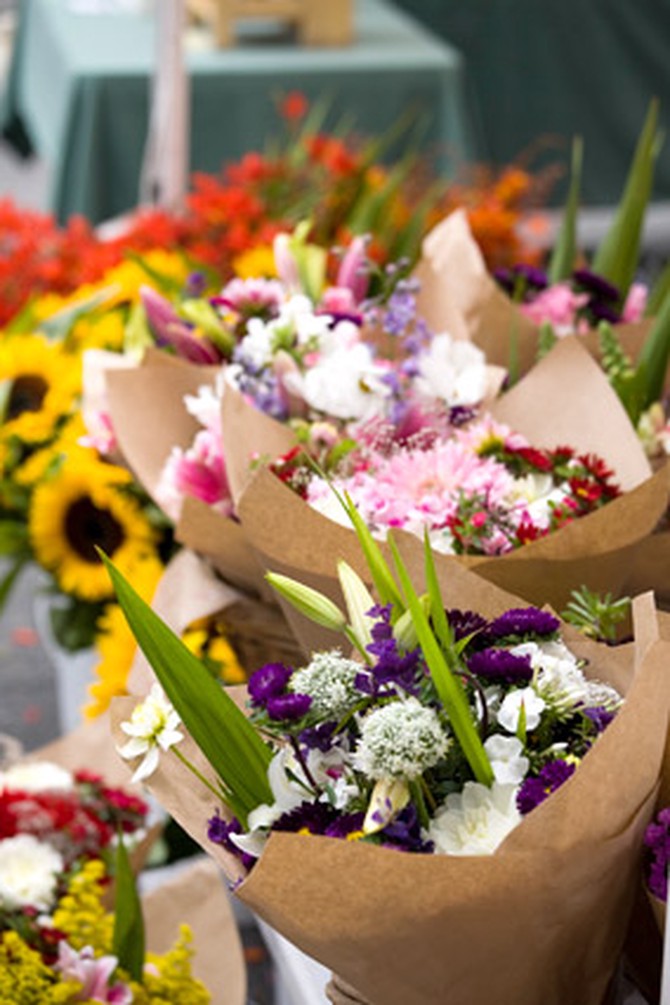
Photo: Thinkstock
Don't Buy on the Wrong Day
Many retailers receive their flower shipments on Friday mornings (in preparation for the weekend rush) and Mondays (when they need to replenish stock), but you should get to know the clerk who stocks the flowers at your local supermarket or corner store, who can tell you the exact delivery days, says entertaining expert Matthew Mead.
Aside from wilted petals and dry leaves, an easy way to determine a bouquet's freshness is to look at the bottom of the stems. Just as with asparagus, you should see white and green fibers in the center. Any brown or mushiness means the flowers have been sitting in stale water for a few days, says Meredith Waga Perez, owner of Belle Fleur in New York City.
Aside from wilted petals and dry leaves, an easy way to determine a bouquet's freshness is to look at the bottom of the stems. Just as with asparagus, you should see white and green fibers in the center. Any brown or mushiness means the flowers have been sitting in stale water for a few days, says Meredith Waga Perez, owner of Belle Fleur in New York City.
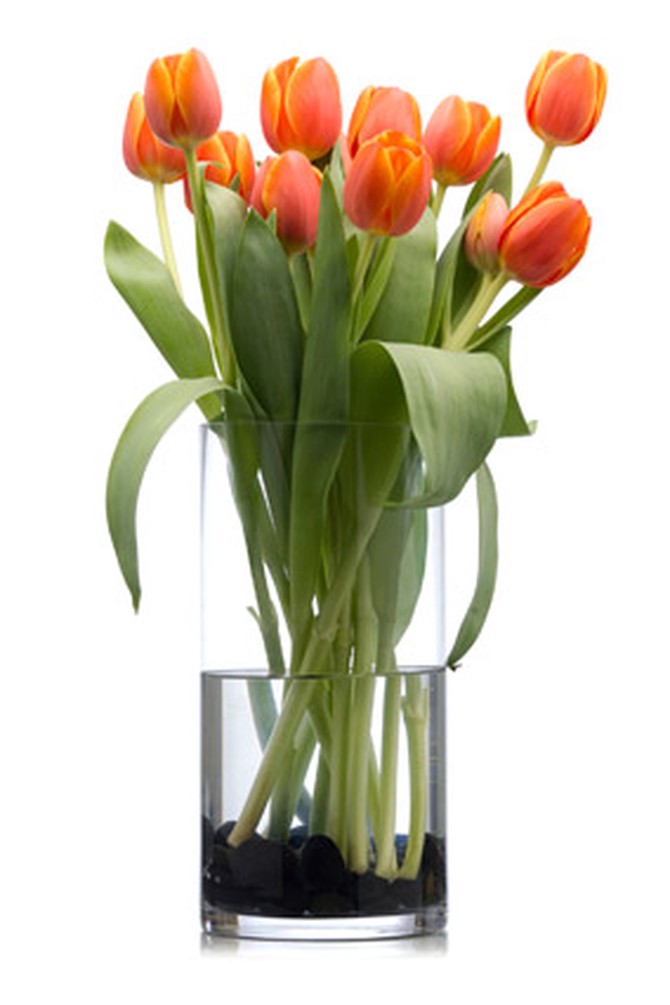
Photo: Thinkstock
Encourage Shy Buds to Open Up
Opting for flowers that haven't bloomed means you'll be able to enjoy them for longer, but it can take some varieties (like the hybrid tea rose, the class most commonly found in grocery stores) up to six days to fully open, says Beth Smiley of the American Rose Society.
While putting flowers in a sunny window will speed up the process, Waga Perez says it can make the petals soft and cause them to wilt. It's best to keep the stems in warm water that contains Floralife (the powdered flower food that comes with most bouquets) and put the arrangement in a cool place away from direct rays. For bulb varieties that follow the light (like tulips), she recommends placing them directly under a chandelier or tall lamp to prevent the heads from drooping and to keep the plant growing straight up. If your flowers have woody stems (like forsythia), a vase containing equal parts seltzer and tap water will maintain the pH these varieties require, says Mead.
You know to cut about an inch off the bottom of each stem when you get a bouquet home, but to extend the shelf life of your arrangement, each day following, recut about a quarter of an inch off the stems and change (not just top off) the water.
While putting flowers in a sunny window will speed up the process, Waga Perez says it can make the petals soft and cause them to wilt. It's best to keep the stems in warm water that contains Floralife (the powdered flower food that comes with most bouquets) and put the arrangement in a cool place away from direct rays. For bulb varieties that follow the light (like tulips), she recommends placing them directly under a chandelier or tall lamp to prevent the heads from drooping and to keep the plant growing straight up. If your flowers have woody stems (like forsythia), a vase containing equal parts seltzer and tap water will maintain the pH these varieties require, says Mead.
You know to cut about an inch off the bottom of each stem when you get a bouquet home, but to extend the shelf life of your arrangement, each day following, recut about a quarter of an inch off the stems and change (not just top off) the water.
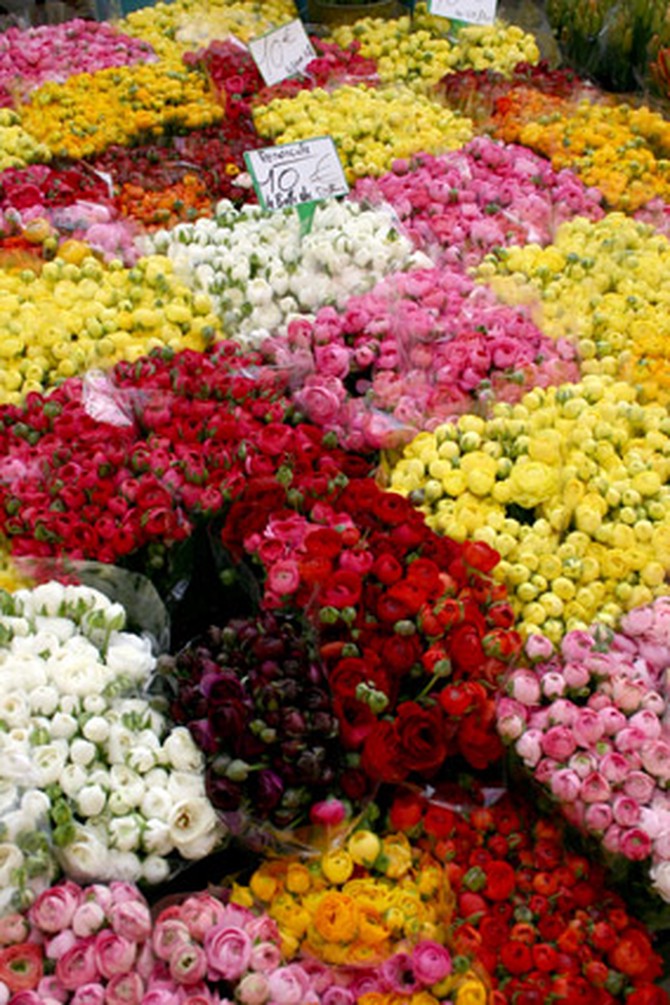
Photo: Courtesy of Matthew Mead
Skip the Middleman
Many florists receive their flowers directly from farms within two days of being cut (which explains their higher price). The premade bouquets that you see in supermarkets, however, are assembled by a third party in large plants off-site and spend more time in transit. And often, old flowers are mixed with new ones, says Waga Perez. To get more flowers for your money and guarantee their freshness, buy single-variety bunches that are more likely to have been picked at the same time. Carnations, which can seem cheap in an arrangement, look like luxurious, ruffled fabric when grouped alone in a tight cluster, says Waga Perez. Not to mention they're readily available all year, are affordable (about 30 cents a stem) and can last up to two weeks. Daisies, pincushion chrysanthemums and hydrangeas (a flower easily grown in greenhouses) are also hardy, budget-friendly options, says Mead.
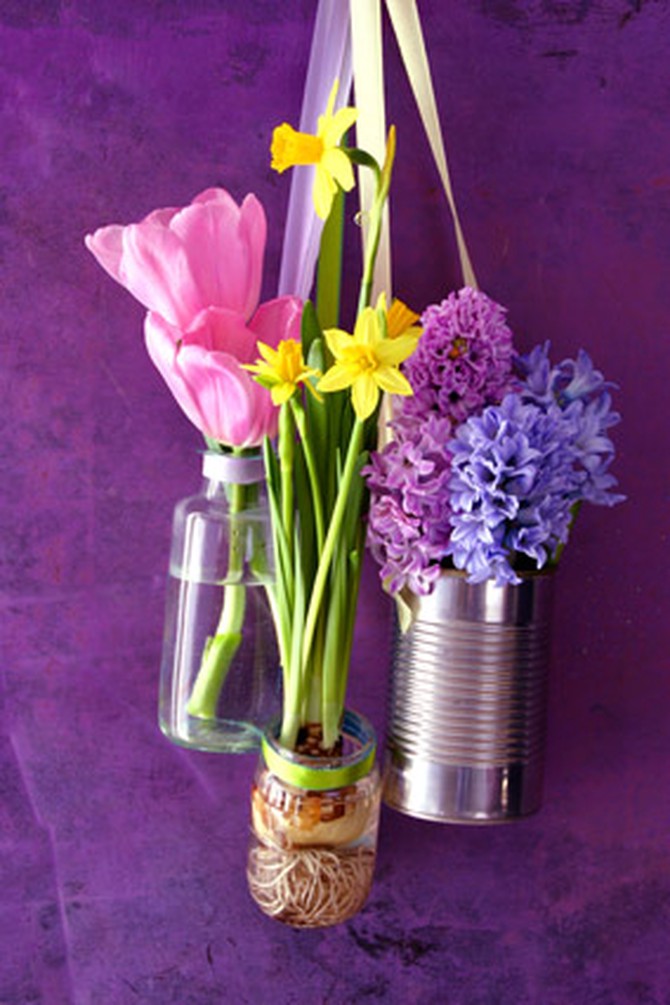
Photo: Courtesy of Matthew Mead
Scale Down a Big Bouquet
Make one big bunch yield several arrangements by dividing it into smaller bud vases. Then group the vases into clusters of three on a windowsill or down the center of your table to avoid a polka-dot effect, says Waga Perez. Single sprigs in a simple glass container can also make as big of a splash as a large, riotous bouquet. And some flowers—like hydrangeas, which require a lot of water—do better alone. Cut the stem of a hydrangea about half an inch from the blossom and stick it in a small punch bowl or float a few in a shallow tray. For an earthy effect (seen at left), wash dirt off of freshly sprouted spring bulbs like daffodils or tulips (being careful not to remove the thin white roots), drop them into a clean spaghetti jar with a few stones at the bottom and watch them bloom, says Mead.
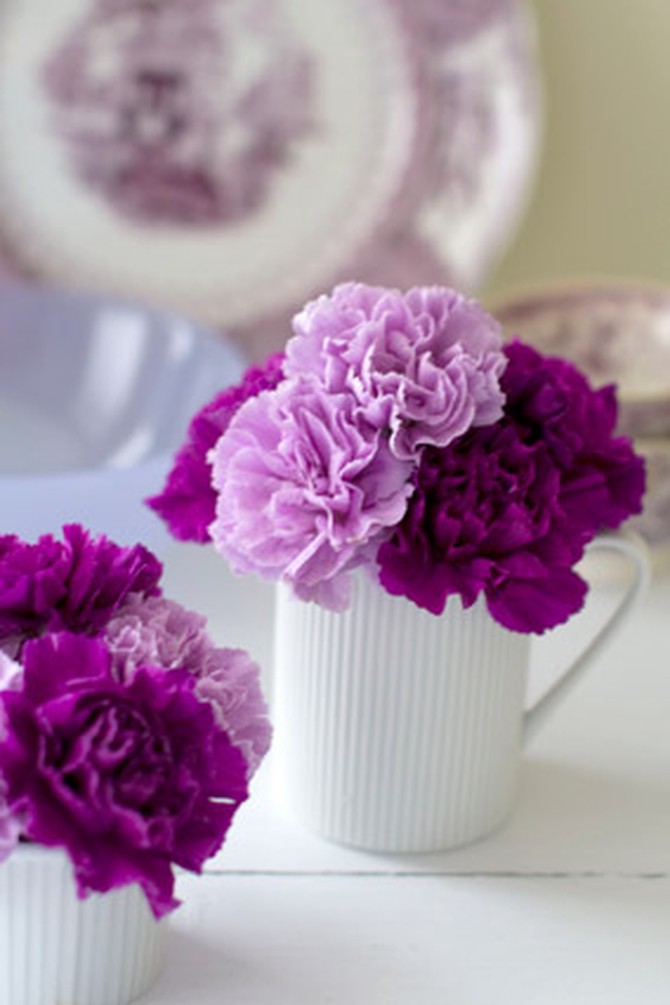
Photo: Courtesy of Matthew Mead
Play It Safe (or Take a Risk) with Color
The biggest mistake amateurs make when it comes to creating a bouquet: using every color in a pack of Skittles. Committing to one shade (like all white) is foolproof, but mixing different varieties in the same color family (as Mead did at left with these lilac- and plum-colored carnations) is an easy way to amp up an arrangement. For a bolder look, celadon green flowers (like button mums) pair well with anything—from coral-colored roses to sunny yellow tulips. Contrasting combos like Chinese red and bright violet or white and aubergine are other florist favorites.
To keep your bouquet from looking sparse or straying in too many directions, gather the stems into a tight cluster and tie them together with a clear hair elastic. Then cut the stems on an angle at the same length for a sophisticated, pavé finish, says Waga Perez. (Keep in mind that flowers shouldn't be any higher than the span from your wrist to your elbow if you plan to put them on your dinner table—otherwise you risk obstructing your guests' view.)
To keep your bouquet from looking sparse or straying in too many directions, gather the stems into a tight cluster and tie them together with a clear hair elastic. Then cut the stems on an angle at the same length for a sophisticated, pavé finish, says Waga Perez. (Keep in mind that flowers shouldn't be any higher than the span from your wrist to your elbow if you plan to put them on your dinner table—otherwise you risk obstructing your guests' view.)
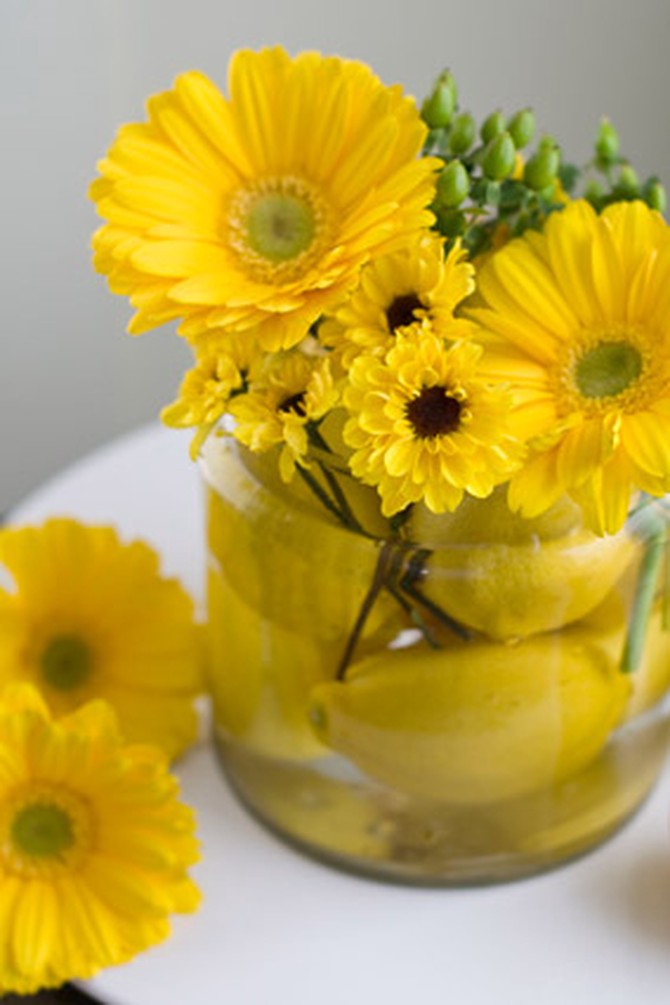
Photo: Courtesy of Matthew Mead
Add Excitement to a Clear Vase
Try creating a flower frog, a device traditionally used to hold stems in place, often constructed out of wire; however, in this case, fashion one out of fruit to anchor your bouquet and make arranging more foolproof. Fill a glass cylinder or large vase with lemons, apples or oranges and add water to just below the rim. Then wedge your blossoms in between. Since water with fruit can become cloudy, Mead suggests changing it every couple of days.
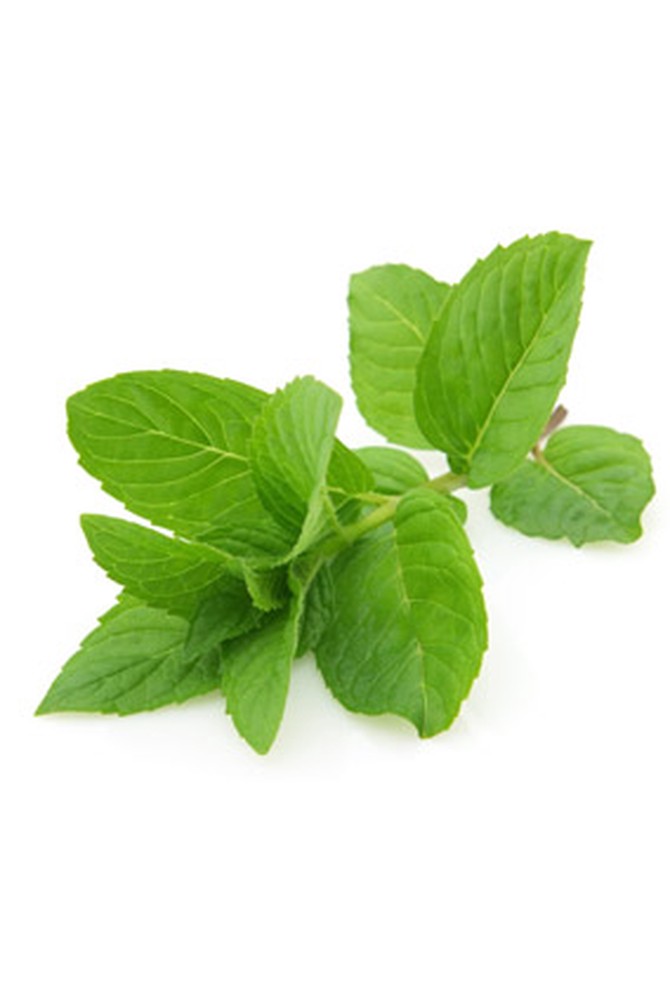
Photo: Thinkstock
Find Luxurious-Looking Greens in Unexpected Places
Twenty peony stems would break the bank, but three can look just as abundant when surrounded by a thick collar of green. The trick is to line the neck of the vase with filler first and place bigger-faced flowers (like amaryllis or open roses) in the center, says Waga Perez. Baby's breath and waxed ferns (which usually come included with carnations) are grocery store signatures that make bouquets look bigger—but also cheapen the effect of your flowers. Pull those suckers out and add fresh mint (at left) or bay leaves from the produce aisle. Twigs, ivy or wild ferns can be found in your backyard and also act as excellent padding, says Mead.
Next: 5 small ways to give your bedroom a big boost
Next: 5 small ways to give your bedroom a big boost
Published 03/28/2012

